Category: Special Equipment
Services: Detailed and Construction Design
Period: July 2017 – December 2017
Client: OMBA – ASG Superconductors
Amount: approx. €300,000
Transport structure of the toroidal magnets for the nuclear fusion project “ITER”
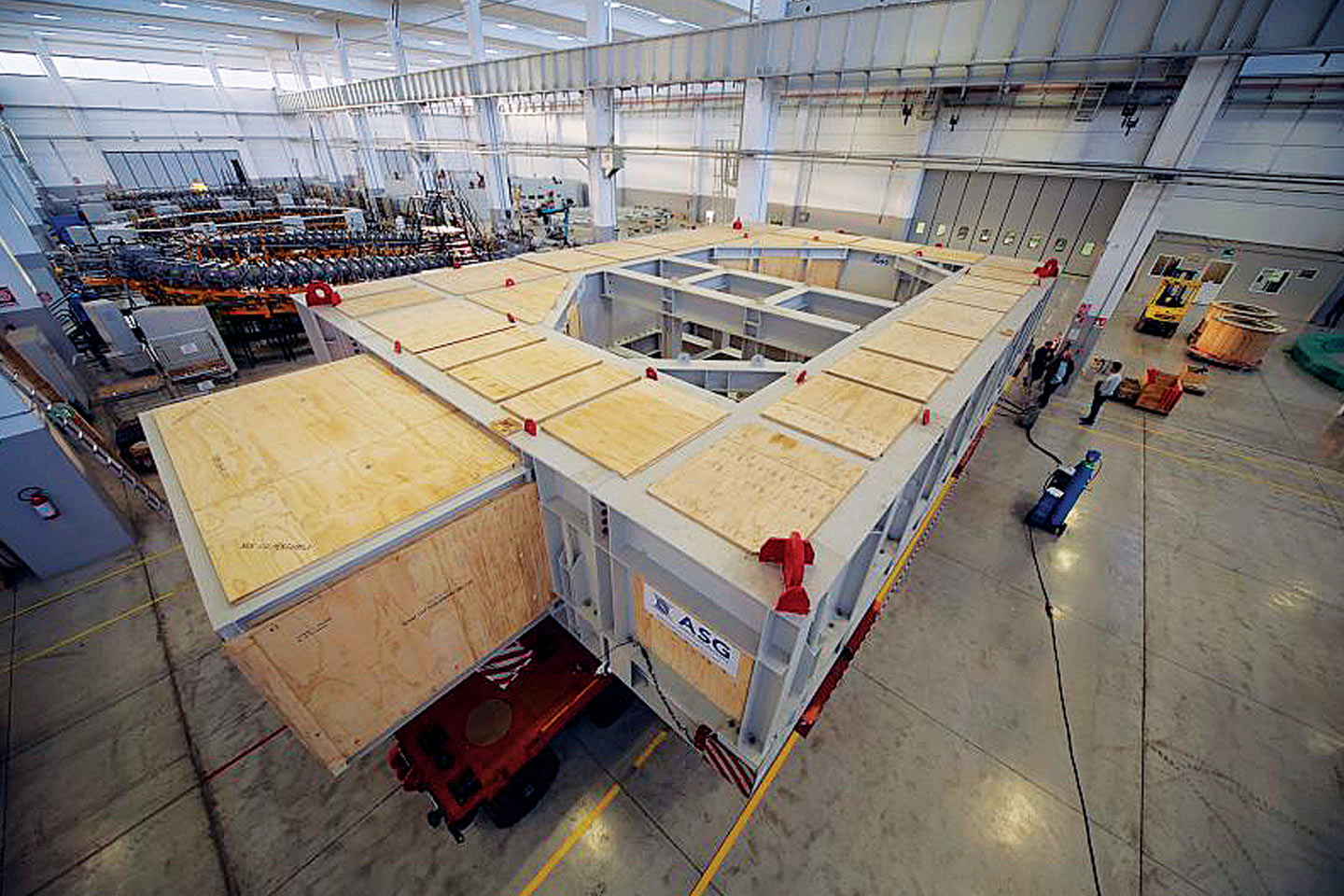
Detailed and construction design of the steel transport structure.
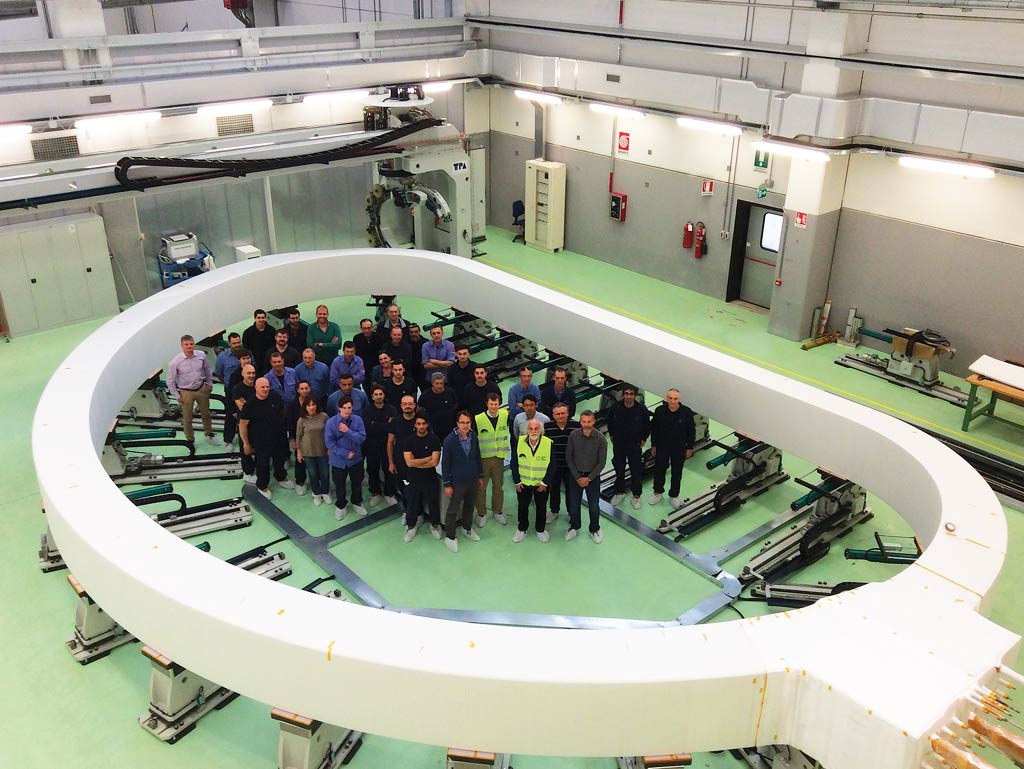
A toroidal magnetic field was realised for the international nuclear fusion project “ITER” to ensure the confinement of nuclear plasma. Each of the 10 magnets to be produced consists of a bundle of superconducting cables (total length 5.5km and weight 120t) inserted in a metallic case, with a total weight of 300 tons and a size of 9x16m.

A toroidal magnetic field was realised for the international nuclear fusion project “ITER” to ensure the confinement of nuclear plasma. Each of the 10 magnets to be produced consists of a bundle of superconducting cables (total length 5.5km and weight 120t) inserted in a metallic case, with a total weight of 300 tons and a size of 9x16m.
For transporting the magnet, a special support structure has been developed to guarantee both diffuse rigid support and shock protection.
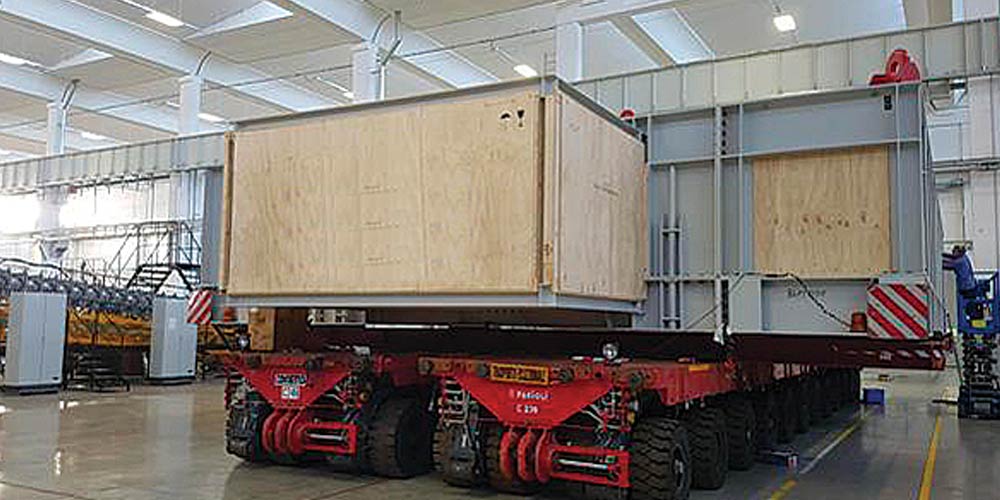

For transporting the magnet, a special support structure has been developed to guarantee both diffuse rigid support and shock protection.
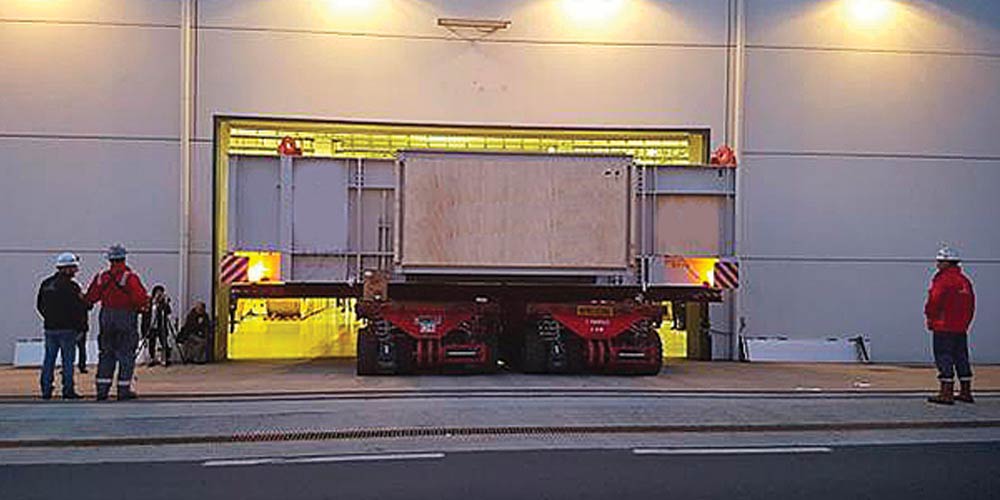
The structure is made up of two double longitudinal and transverse walls that create a safe envelope; between the coupled walls, made with solid web I-beams, there is a series of saddles supported by secondary beams connected to the walls.

The structure is made up of two double longitudinal and transverse walls that create a safe envelope; between the coupled walls, made with solid web I-beams, there is a series of saddles supported by secondary beams connected to the walls.
In addition, the load-bearing structure was designed according to the different assembly and transport phases: the main walls are made up of two superimposed I sections that can therefore be dismantled into an upper part and a lower part. The structure can also be divided into smaller segments, to allow a “standard” transportation of the framework which must return to the workshop several times.
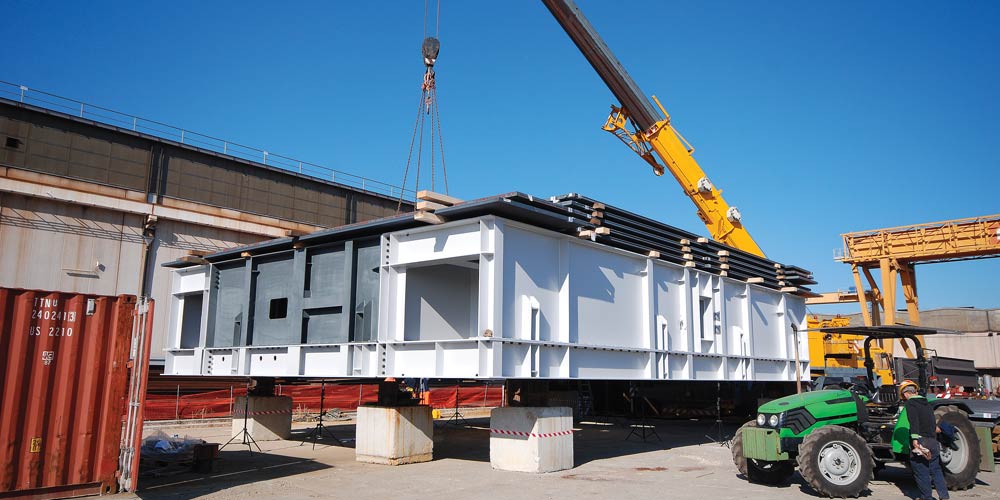

In addition, the load-bearing structure was designed according to the different assembly and transport phases: the main walls are made up of two superimposed I sections that can therefore be dismantled into an upper part and a lower part. The structure can also be divided into smaller segments, to allow a “standard” transportation of the framework which must return to the workshop several times.